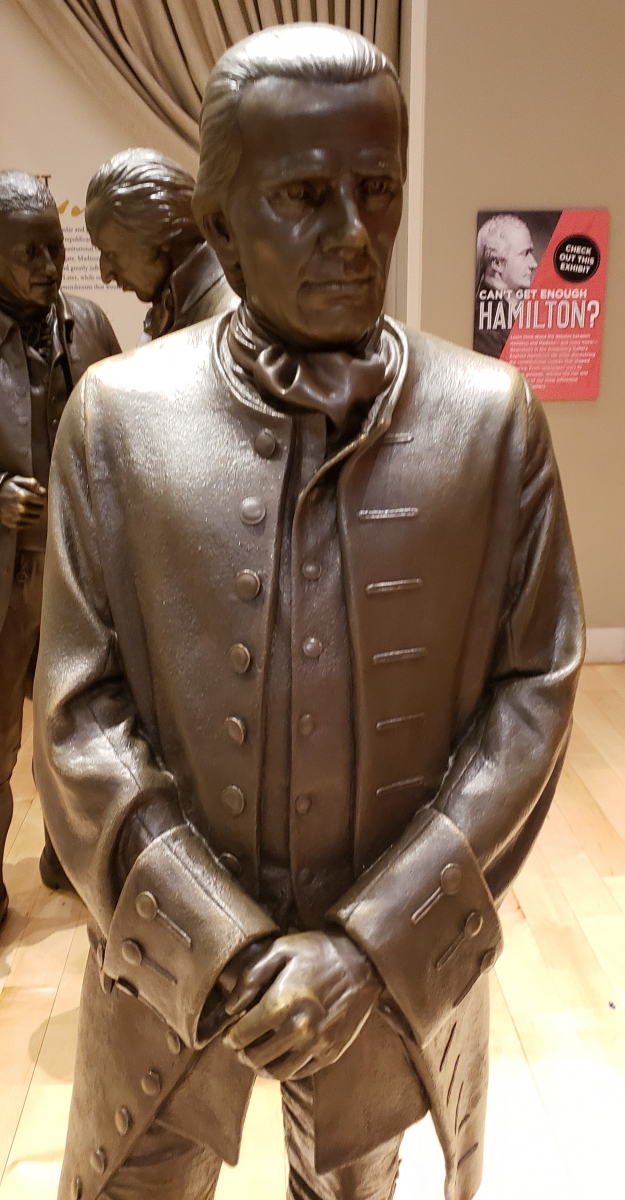Related Posts
- Buy Tickets for The Constitutional Walking Tour of Philadelphia – See 20+ Sites on a Primary Overview of Independence Park, including the Liberty Bell and Independence Hall
- First Continental Congress
- Carpenter's Hall
- Second Continental Congress
- Constitutional Convention
- Independence Hall
- Signers' Garden
- Signers' Walk
- National Constitution Center
- Congress Hall
Birth: April 19, 1721
Death: July 23, 1793 (aged 72)
Colony: Connecticut
Occupation: Shoe-maker, Merchant, Lawyer, Judge, Politician
Significance: Signed The Declaration of Independence (at the age of 55); signed the United States Constitution (at the age of 66); served as the President of Delaware (1777-1778); served as United States Congressman from Connecticut (1789-1791); Sherman was one of only six people to sign both The Declaration of Independence and the Constitution of the United States

Roger Sherman was born in Massachusetts to a family of modest means, and he received little formal education. Sherman worked as a shoemaker until moving to Connecticut at the age of 22 after his father's death in 1743. In Connecticut, Sherman opened a successful bookstore with his brother, where Sherman used his newly extensive literary access to become a self taught lawyer. Sherman passed the Bar in Connecticut in 1754, and he started a legal practice.
Sherman also became active in local politics, and in 1755, Sherman was chosen to represent his town in the Connecticut House of Representatives. After leaving the Connecticut House of Representatives in 1761, Sherman was named Justice of the Peace and became a judge in the Connecticut Court of Common Pleas.
In 1774, Sherman was elected to the First Continental Congress and traveled to Philadelphia to meet at Carpenters' Hall. The following year, Sherman was appointed to the Second Continental Congress, which again met in Philadelphia. At the Second Continental Congress, Sherman was part of the Committee of Five assigned to the write The Declaration of Independence. Sherman signed The Declaration of Independence and remained in the Continental Congress until resigning in 1781. During his time in the Continental Congress, Sherman also signed the Articles of Confederation.
After leaving the Continental Congress, Sherman was elected the Mayor of New Haven, Connecticut in 1784. In 1787, Sherman was named a member of the Constitutional Convention which met in Philadelphia during the hot Summer of 1787. At the Constitutional Convention, Sherman was a major opponent of James Madison's plan to write an entirely new United States Constitution. He wanted to revise the Articles of Confederation to give the Federal government more powers, but wanted to preserve most of the aspects of its government, especially its unicameral legislature which gave equal power to every state, even a small state like his home state of Connecticut. Eventually though Sherman realized there was no support for reworking the Articles of Confederation, and he helped to draft, debate and signed the United States Constitution.
Sherman is one of only six founders who signed both The Declaration of Independence and the United States Constitution and is one of only two founders who in addition to The Declaration of Independence and the Constitution, also signed the Articles of Confederation. And Sherman is the only Founding Father who signed all four of the most important founding documents in America's history: the Articles of Association (signed in the First Continental Congress), The Declaration of Independence, the Articles of Confederation, and the United States Constitution.
After signing the Constitution, Sherman returned to Connecticut where he continued to serve as New Haven's Mayor and then after the Constitution went into effect, Sherman was elected as one of Connecticut's first U.S. Congressman in 1789. Sherman served one term in Congress before returning to Connecticut. Sherman continued to serve as the Mayor of New Haven, until his death two years later in 1793.
Roger Sherman in Philadelphia
Roger Sherman first lived in Philadelphia in 1774 while he was a member of the First Continental Congress. During this time, Sherman worked at Carpenters' Hall. Starting the following year in 1775, Sherman once again traveled to Philadelphia for the Second Continental Congress which met at Independence Hall, where he signed The Declaration of Independence.
Sherman worked again at Independence Hall when he helped to write the United States Constitution at the Constitutional Convention in 1787. From 1790 to 1791, Sherman again lived in Philadelphia while serving in the United States Congress and working at Congress Hall.
Today, you can also see a statue of Sherman inside of the National Constitution Center in their Signers' Hall exhibit. Signers' Garden pays tribute to the Founding Fathers, including those such as Sherman, who signed The Declaration of Independence or the United States Constitution. A plaque commemorating Sherman for signing The Declaration of Independence can also be found on Signers' Walk on the 600 block of Chestnut Street. The National Constitution Center, Independence Hall, Carpenter's Hall, Signer's Walk, Signers' Garden and Congress Hall are all visited on The Constitutional Walking Tour!
Signer's Walk, Signers' Garden, and Independence Hall are all visited on The Constitutional Walking Tour!



